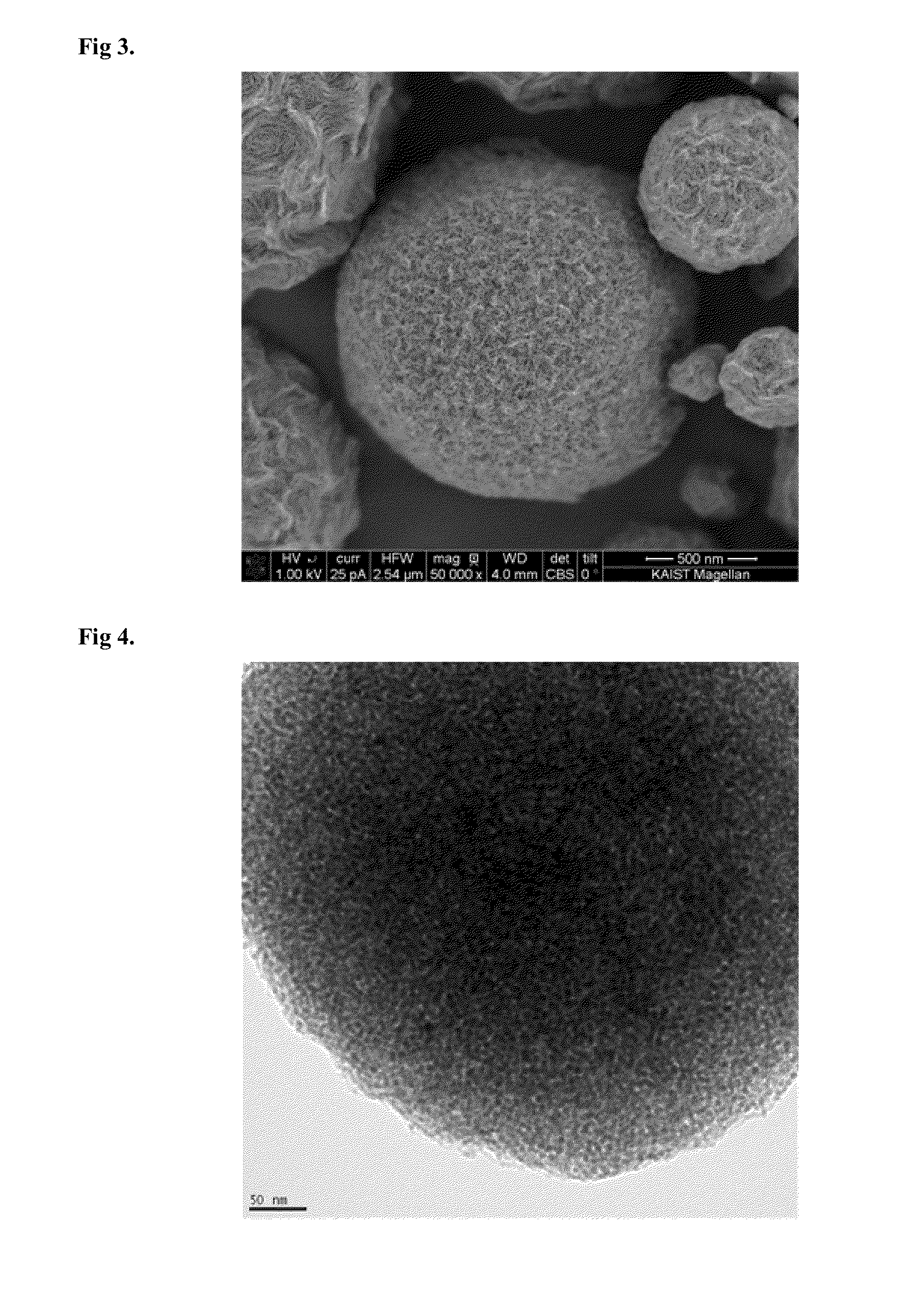Graphene-Based Composite and Method of Preparing the Same
a graphene-based composite and graphene-based technology, applied in the direction of conductors, cell components, physical/chemical process catalysts, etc., can solve the problems of graphene prepared by chemical synthesis with chemical defects, graphene is likely to fracture into small pieces, graphene prepared by chemical synthesis exhibits significantly inferior properties to original graphene in terms of conductivity and specific surface area, and achieves large specific surface area
- Summary
- Abstract
- Description
- Claims
- Application Information
AI Technical Summary
Benefits of technology
Problems solved by technology
Method used
Image
Examples
example
Example 1
[0119]Graphite is introduced into a mixed solution of sulfuric acid (H2SO4), potassium persulfate (K2S2O8) and phosphorous pentoxide (P2O5), and the graphite reacts with the mixed solution at 80° C. for about 5 hours to form a first oxidized graphite. The first oxidized graphite is reacted with a potassium permanganate (KMnO4) solution at 35° C. for 2 hours to prepare a graphene oxide. 0.1 g of the prepared graphene oxide is dispersed in a solution, in which 2 g of a polyethylene oxide-based tri-block copolymer as a pore agent is dissolved in 100 g of water, followed by dissolving 5 g of tetraethoxy silane (TEOS) as a metal oxide precursor, thereby preparing a precursor solution. Droplets of the prepared precursor solution are sprayed into a spray pyrolysis apparatus in an argon atmosphere using an ultrasonic sprayer. The sprayed precursor solution droplets are prepared into graphene-based composite (porous graphene-metal oxide composite, graphene-SiO2) particles having the...
example 2
[0120]Graphene-based composite (porous graphene-metal oxide composite, graphene-SiO2) particles are prepared in the same manner as in Example 1 except that 5 g of the pore agent is used instead of 2 g. Scanning electron microscope (SEM) and transmission electron microscope (TEM) images of the prepared graphene-based composite are shown in FIGS. 3 and 4, respectively.
example 3
[0123]0.1 g of graphene oxide synthesized by a typical modified Hummers method is dispersed in a solution, in which 2 g of a polyethylene oxide-based tri-block copolymer as a pore agent is dissolved in 100 g of water, followed by dissolving 5 g of tetraethoxy silane (TEOS) as a metal oxide precursor, thereby preparing a precursor solution. Droplets of the prepared precursor solution are sprayed into a spray pyrolysis apparatus in an argon atmosphere using an ultrasonic sprayer. The sprayed precursor solution droplets are prepared into porous graphene-metal oxide composite (graphene-SiO2) particles in a high-temperature reaction tube having a length of 1 m and a temperature of 500° C., and the prepared particles are collected by a filter. Next, after 1 g of the graphene-SiO2, 1.25 g of sucrose, 5 g of distilled water and 0.14 g of sulfuric acid are mixed, the components are reacted by heating at 100° C. for 6 hours, followed by heating at 350° C. for 2 hours and at 750° C. for 2 hour...
PUM
| Property | Measurement | Unit |
|---|---|---|
| diameter | aaaaa | aaaaa |
| thickness | aaaaa | aaaaa |
| thickness | aaaaa | aaaaa |
Abstract
Description
Claims
Application Information
 Login to View More
Login to View More - R&D
- Intellectual Property
- Life Sciences
- Materials
- Tech Scout
- Unparalleled Data Quality
- Higher Quality Content
- 60% Fewer Hallucinations
Browse by: Latest US Patents, China's latest patents, Technical Efficacy Thesaurus, Application Domain, Technology Topic, Popular Technical Reports.
© 2025 PatSnap. All rights reserved.Legal|Privacy policy|Modern Slavery Act Transparency Statement|Sitemap|About US| Contact US: help@patsnap.com



